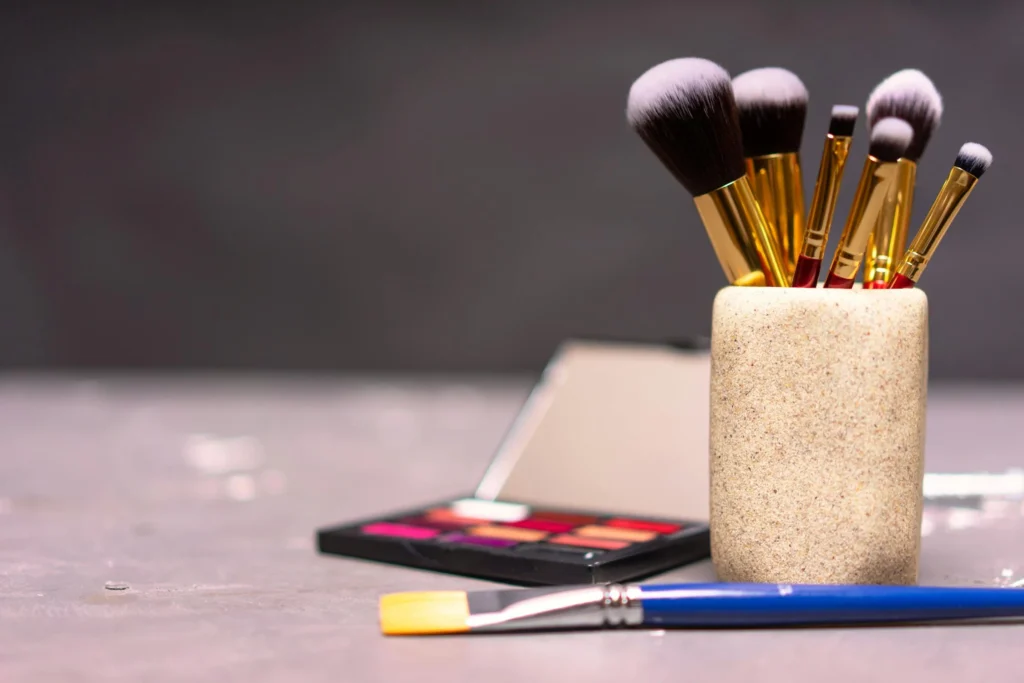Women worldwide are increasingly suing big beauty brands, claiming that their makeup products cause cancer. This legal battle highlights growing concerns about the safety of cosmetic products and the responsibility of companies to protect their consumers.
The rise in lawsuits underscores a critical issue in the beauty industry. They prompt a closer examination of the ingredients used in makeup and their potential health risks. An NBC News article mentions recent research that highlights the truth in these allegations. It found that the 50,000 cancer lawsuits against Johnson & Johnson (J&J) filed for this reason may be true.
In this article, we will look at the growing number of lawsuits against beauty products manufacturers for their link with cancer.
Background on Makeup and Health Concerns
Makeup has been a staple of beauty routines for centuries, evolving significantly in terms of formulations and availability. While it has the power to enhance appearance and boost confidence, concerns about the safety of its ingredients have persisted.
Historically, some cosmetics contain harmful substances like lead and mercury. Over time, regulations improved, but the recent wave of lawsuits suggests that safety issues remain unresolved. Women who developed cancer allege that certain ingredients in their makeup were the culprits, leading to renewed scrutiny of cosmetic safety.
Consider the example of formaldehyde found in chemical hair relaxers used by women to straighten their hair. Many government and international organizations have stated that formaldehyde is toxic to human health. In fact, thousands of black females have also alleged that the relaxers that they used for hair straightening caused them cancer.
The same is the case with J&J’s talcum powder, which is said to contain asbestos. Exposure to asbestos is linked to a higher risk of mesothelioma, lung cancer, and ovarian cancer in humans. It is due to this that J&J had to enter a $700 million deal to resolve an investigation launched by 43 States Attorney Generals.
Besides beauty products, asbestos can also be present in old buildings and construction materials. For instance, products like adhesives, sealants, ceiling tiles and flooring, etc., can all have asbestos. Thus, you need to be aware of your exposure to this substance through all such products.
However, the most significant question you would have is, what if you were not aware of the exposure? You might ask: can I sue for asbestos exposure? Well, the answer is yes; you can sue for asbestos exposure if you were not made aware of its presence. This can include exposure through beauty products, your rented apartments, or anything else.
According to TorHoerman Law, you can sue the relevant party and seek compensation for the damages you have suffered. The compensation can be for medical expenses, lost wages, suffering, etc. It is best to hire a professional attorney to negotiate with the defendant’s insurance company to get the best possible settlement.
The Link Between Makeup and Cancer
Scientific studies have identified several ingredients in makeup that could be carcinogenic. These include parabens, phthalates, and heavy metals, which are often used as preservatives, fragrance components, and colorants. Parabens, for example, mimic estrogen in the body. They can potentially disrupt hormonal balance and increase cancer risk.
Phthalates, commonly found in fragrances, are linked to reproductive harm and cancer. Heavy metals like lead and cadmium, though present in small amounts, can accumulate over time and pose serious health risks. The accumulation of these substances through daily use of makeup raises significant health concerns, particularly for long-term users.
For the unversed, over 99% of the lip cosmetics and externally applied cosmetics in the U.S. contain lead at levels below ten ppm. However, these levels are not harmful and are set as benchmarks by the U.S. Food & Drug Administration. Some products, though, may contain larger levels of leads that can cause harm to your health.
Legal Actions Against Beauty Brands
The lawsuits against beauty brands typically focus on negligence and failure to warn consumers about potential health risks. Plaintiffs argue that companies knew or should have known about the dangers posed by certain ingredients. However, they still continued to include them in their products without adequate warnings.
These legal battles often involve high-profile brands and large sums of money, reflecting the seriousness of the allegations. In some cases, internal documents revealed during litigation have shown that companies were aware of the risks but chose to prioritize profit. This has led to calls for stricter regulations and greater transparency in the industry.
Regulatory and Industry Response
In response to these lawsuits and growing public concern, regulatory bodies like the FDA have started to take a closer look at cosmetic safety. However, the regulation of cosmetics in many countries remains less stringent compared to other products like pharmaceuticals.
The FDA, for instance, does not require pre-market approval for most cosmetics. This means that products can be sold without rigorous safety testing. This regulatory gap has led to increased calls for reform.
Some beauty brands have responded by reformulating their products to exclude harmful ingredients and adopting stricter safety standards. Industry groups have also launched initiatives to improve transparency and rebuild consumer trust.
The Modernization of the Cosmetics Regulation Act of 2022 is the first major rejig of the Federal Food, Drug, and Cosmetic Act. This came into effect on December 29, 2022. It enforces a new set of regulations to ensure customer safety.
Even manufacturers in the beauty industry have taken certain actions to reduce the use of ingredients like asbestos in talcum powder. On the other hand, a few have completely opted for talc-free makeup. Major companies like L’Oreal and Chanel are now opting for talc-free makeup in the wake of the increasing number of cancer lawsuits.
Frequently Asked Questions
What is the most common type of cancer associated with talcum powder?
The most commonly associated cancer with talcum powder, especially that of J&J, is ovarian. Many studies have linked J&J’s asbestos-containing talc to ovarian cancer in hundreds of women. These women have also taken legal action against the company that has already paid billions of dollars in punitive damages.
Which makeup brands have asbestos?
Many brands have tested positive for their association with asbestos and all the health conditions linked to it. Some of these brands are J&J, Claire, Justice, City Color, and more. Cosmetic and makeup products for children are more likely to have asbestos present in them.
Is formaldehyde bad for your hair?
While formaldehyde may not necessarily be bad for your hair, it is certainly harmful to your health. Most chemical hair relaxers used for hair straightening release this toxic gas in the air. This can also be ingested through the skin of the people who apply it to their hair.
The lawsuits against big beauty brands highlight a significant issue in the cosmetics industry, emphasizing the need for greater safety and transparency. The potential link between makeup and cancer has prompted legal, regulatory, and consumer responses. These are aimed at ensuring that beauty does not come at the expense of health.
As these cases unfold, they serve as a reminder of the importance of scrutinizing the ingredients in everyday products. They are holding companies accountable for their impact on public health. The outcome of these legal battles could lead to meaningful changes in how cosmetics are regulated and produced, ultimately benefiting consumers worldwide.

